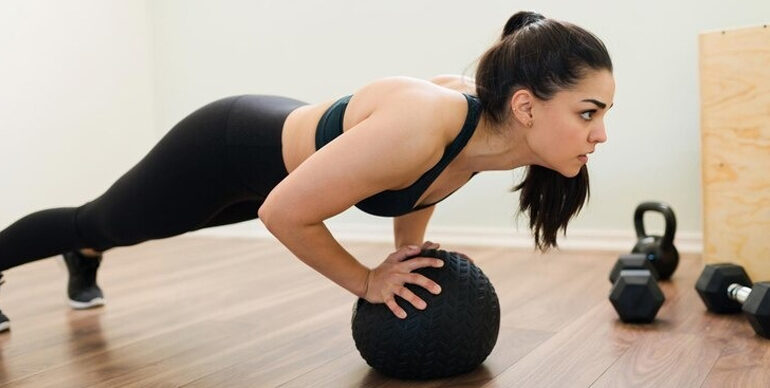
Exercising or moving about during injury – is not what you think one must do right? Most people assume that if you have a serious internal injury or problem, the best recipe for getting better is to just lie down and relax.
Fitness Training is Important Always
Well, the bad news is that this is outdated advice and most qualified doctors and medical practitioners will tell you that resting all the time and being inactive will in fact make your injury worse and may even kill you! Modern medicine has agreed upon the fact that bed rest is a potentially harmful treatment and needs much more careful evaluation about it’s merits.
When The Body Rests You Wither Away
Doctors have gathered many findings and conclusions based on research and experience over the last 50 years and it is known that immobilization of the body will result in physical and mental decline of an individual. As soon as we begin to spend too much time under the covers, almost all the parts of our body begin to waste away. Lets look in more details into what happens to different parts of the body when we do not move as much as we should.
Tissues and Joints
The joints, tendons, ligaments, muscles, and skin that are the flexible parts of our body are accostomed to movement thus allowing them to function well. When you do not move them, they shrink in size. This reaction that is known as contracture can be seen within eight hours of rest. After a night of sleep you will notice that some joints and muscles become stiff. While stretching in the mornings we can reverse this side effect of rest.
Bones
Our bones might appear to be stable, solid and rock hard but bone tissue is a highly dynamic structure that is constantly changing. When you add stimulus externally i.e. if you carry a weight or perform push ups, bone tissue gets added or broken down. But as soon as a person becomes static, bones begin to lose calcium, the rate of loss of which can be measured through the passage of urine only after just a few days of inaction. In fact scientists have measured the loss of calcium and found it to be as much of 1.54 gms of calcium loss per week! This flushing of calcium through the urine also raises the risk of kidney stones and of calcification in tissues. An unused skeleton soon becomes crumbly and fragile. If you have been confined to a bed for more than three weeks the chances of you breaking a hip are almost double.
Skin
Lying down in a horizontal position curtails blood flow in the skin tissues. The skin gets highly compressed especially in the areas where the skin is in direct contact with the bones underneath resulting in restriction of blood flow. The skin tissue in turn gets slowly dissolved, dies and then turns into a festering sore that is susceptible to inflammation and pain.
Muscles
Your muscles are only as strong as they need to be for performing your usual tasks. If your muscles are not given anything to do, it will start wasting away and lose roughly one-eighth of it’s strength within just one week of physical inactivity. You would have observed this phenomenon of ‘atrophy’ at work when someone has to carry a limb in a cast after a bone fracture. After the plaster is removed, you will note that the unused muscles have become stiff and short. This is because the voluntary disuse of our body makes our muscles useless. When a person is in absolute bedrest, the body loses 8 gms of protein every single day. Back pain slowly starts to develop because the stomach muscles as well as the muscles that line the back are being wasted away. So you see that the medical prescription of advising bedrest to heal back pain is quite absurd!
Urinary Passages
The renal pelvis drains properly due to the effects of gravity. If a person lies in a horizontal position all the time, the accumulating urine cannot properly run off and thus the fluid is retained in parts of the kidney in the calyxes. This poses a grave risk of developing kidney stones and infection.
Lungs
People who remain inactive for long periods may have mucus accumulating in certain parts of their lungs as a result of which air cannot move freely through the affected areas.
Heart
Just like every other muscle in the body, the heart which is a muscle shrinks when there is not much work to do. After 3 weeks of training, the heart stroke volume can decrease by as much as 25 % and the size of the heart can shrink by 11 %. Also the chances of developing an embolism is higher as the blood cannot circulate as usual. A thrombus can also emerge and can cause a sudden death by blocking a vessel.
Digestion
When a person does not move around, the peristalsis that is needed to move the food through the gut slows down leading to digestive problems and constipation.
Sex & Reproduction
Physical inactivity decreases the production of the male hormone testosterone and suppresses the libido. Add to the fact that sperm production count also drops in the testes and you have a high failure rate for reproduction.
Psychological Effects of Immobility
In an experiment, young male test subjects were kept in bed for as long as five weeks and monitored. A wide range of mental and sensory problems developed in the bodies of these men. They developed sleeping disorders, anxiety, and hostility to the people around them. There were also hints that the physical inactivity impaired their senses and their ability to hear, see, and taste. Another long-term psychological effect of inactivity can be observed in hospitals. As soon as patients are admitted, many of them abandon their willpower and slip into the role of a passive person to be taken care of by others. Whenever a doctor or nurse appears, patients act in a servile way and are ready to abide and obey. Other people now control most aspects of their life: what they eat, when they sleep, and when visitors are allowed.
The lack of intellectual stimulation eventually dulls the mind and a stay in a clinic or a hospital can mark a sharp decline in cognitive abilities. Even after being released from the hospital, a surprisingly high number of people struggle to get back to their normal lives. It is thus no small wonder that many patients have trouble resuming independent management and decision making after prolonged bed rest.
So you see how pain and rest are a vicious cycle when taken together! As soon as you feel the pain you start to take it easy. In the beginning, the rest does lead to some sort of pain relief, but in the long run it gives rise to deconditioning — which basically makes the pain worse. This increase of pain adds to the urge to take it easy. Eventually, the rest becomes the reason for being sick and the sickness becomes the reason for the rest and your pain will very likely become chronic. So remember to remain active throughout your life no matter what and you will be just fine – the way nature intended you to be!
Tania Verma
 Tania Verma is the co-founder of Wellintra Fitness and an avid Yoga and Martial Arts Fitness Trainer and Practitioner. Tania lives in Mumbai and New York City.
Tania Verma is the co-founder of Wellintra Fitness and an avid Yoga and Martial Arts Fitness Trainer and Practitioner. Tania lives in Mumbai and New York City.
Do not miss a single article!
Submit your email id to get new articles directly into your email inbox!
- Zumba Dance Fitness at Byjus - February 25, 2020
- History of Corporate Wellness Programs - February 18, 2020
- Yoga at a Conference - December 11, 2019




Add Review